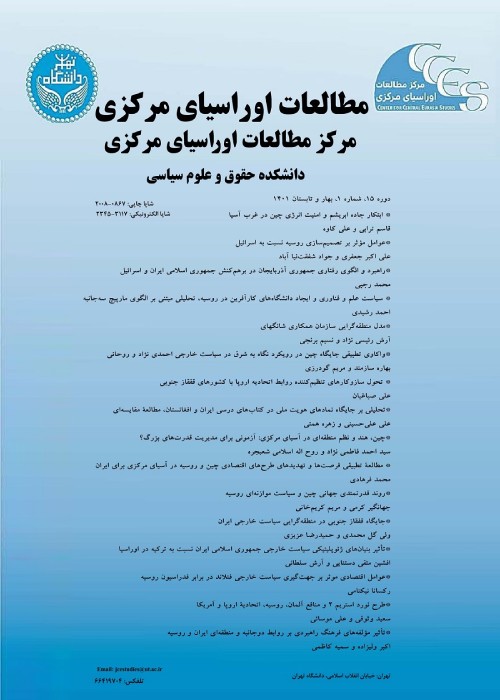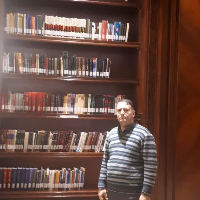Geopolitical Representation of Russia in the Hollywood
Author(s):
Article Type:
Research/Original Article (دارای رتبه معتبر)
Abstract:
The advent of photography and cinema, along with the development of technical tools for reproducing and disseminating images, has given many geographical spaces a great virtual appearance and confrontation with the public, a process that can be described as the “democratization” of space. In this process, the formation of a structure of all geographical spaces is represented. At least four factors must be used for parallelism: Duplication, Pluralization, Diversity, and Multiplicity. Matchmaking is an effort to produce and reproduce all features and characteristics of a space. Pluralism means the possibility of the presence of all opportunities in a space without a centrist force. Divergence also refers to centrifugal flow, based on which collectivism and pluralism are made and ultimately suffocation refers to a way in which there is no sign of separation, uniformity and assimilation. These four factors are an attempt to eliminate discrimination and inequality in the homogeneous distribution of space. This means that the four factors must be used to break the center-periphery relationship and centralize one space and marginalize other spaces. A central space tries to highlight its features and coordinates and turn it into an “audit center” and reduce spatial diversity. Cinema deals with both ways of parallelizing and distributing inequalities. In other words, on the one hand, cinema can give space to the marginal spaces of opportunity and create a democratic space and it can also move towards justifying and showing the superiority of the central space in opposition to the “other space”. How spatial representations are represented in cinema is a matter of linking cinema and geography.
Result and discussion
Slavoj Žižek, the Slovenian post-Marxist philosopher, transformed the Hollywood film industry and its political-spatial developments by categorizing the American theatrical process from 1990 to 2001 after being affected by the September 11 attacks. He divides it into “Truman’s” and “Matrix’s” plays and explores the ideological and dramatic coordination of Americans’ understanding of the world after 9/11. Truman is a 1998 comedy, sci-fi, and drama film directed by Peter Lindsay Weir and starring Jim Carrey. The film depicts the life of a man whose life is being broadcast on television 24 hours a day for millions of people around the world without his knowledge. The film’s plot revolves around a middle-class man who, after a while, realizes what he has in mind about his happy and promising life. It’s a TV show. The Matrix is a 1999 science fiction film written and directed by the Wachowski Brothers. The film narrates the existence of human beings as fictional realities that are constructed by man-made machines and nourished by the human mind and energy. According to Žižek, both films represent the real-life credentials of everyday life in the United States and question “simulated reality” and represent “the Ultimate American Paranoid Fantasy”. Conclusion
Media is recognized as a powerful and influential tool in today’s world that directs the flow of power generation in space. Cinema and film have become an important tool for competing on a variety of national and transnational scales as one of the important pillars of the media which have the power to persuade, motivate and lead to uncertainty. Therefore, research on the relationship between geopolitics and cinema, which began with post-modern approaches and especially with the influence of the Frankfurt School, follows a study of how to represent the action and response of geopolitical foundations in film circles and its external effects are on the audience. The present study, by using discourse and narrative analyses of three selected films, Rambo 2 (1985), Unwanted Injury (2002), and Fall (2012), seeks to explore how Russian geopolitical foundations are represented in Hollywood cinema. The results of this study indicate that discourses such as the cold War, non-construction, unorganized space, Russia-China-Iran triangle, and tensions seem to be the most important elements of geopolitical representations of Russia in Hollywood cinema. In these films, the location of the film’s screenplays is the same locations proposed by classical geopolitical theorists such as Halford John Mackinder and Nicholas John Spykman; places such as Hartland and Rimland, or spaces where hostile geopolitics survived the cold War. It is reminiscent of Russia, Cuba, and Colombia. Hollywood also needs to represent these strategic locations as “geopolitical tensions”. From a geopolitical point of view, Hollywood cinema seems to have “hegemonic representations” that produce in the minds of the audience a “new consensus” and a ‘new interpretation” of the world map.Keywords:
Cinema , Cold War , Geopolitics , Representation , Russia
Language:
Persian
Published:
Central Eurasia Studies, Volume:13 Issue: 27, 2021
Pages:
665 to 680
magiran.com/p2244061
دانلود و مطالعه متن این مقاله با یکی از روشهای زیر امکان پذیر است:
اشتراک شخصی
با عضویت و پرداخت آنلاین حق اشتراک یکساله به مبلغ 1,390,000ريال میتوانید 70 عنوان مطلب دانلود کنید!
اشتراک سازمانی
به کتابخانه دانشگاه یا محل کار خود پیشنهاد کنید تا اشتراک سازمانی این پایگاه را برای دسترسی نامحدود همه کاربران به متن مطالب تهیه نمایند!
توجه!
- حق عضویت دریافتی صرف حمایت از نشریات عضو و نگهداری، تکمیل و توسعه مگیران میشود.
- پرداخت حق اشتراک و دانلود مقالات اجازه بازنشر آن در سایر رسانههای چاپی و دیجیتال را به کاربر نمیدهد.
In order to view content subscription is required
Personal subscription
Subscribe magiran.com for 70 € euros via PayPal and download 70 articles during a year.
Organization subscription
Please contact us to subscribe your university or library for unlimited access!



